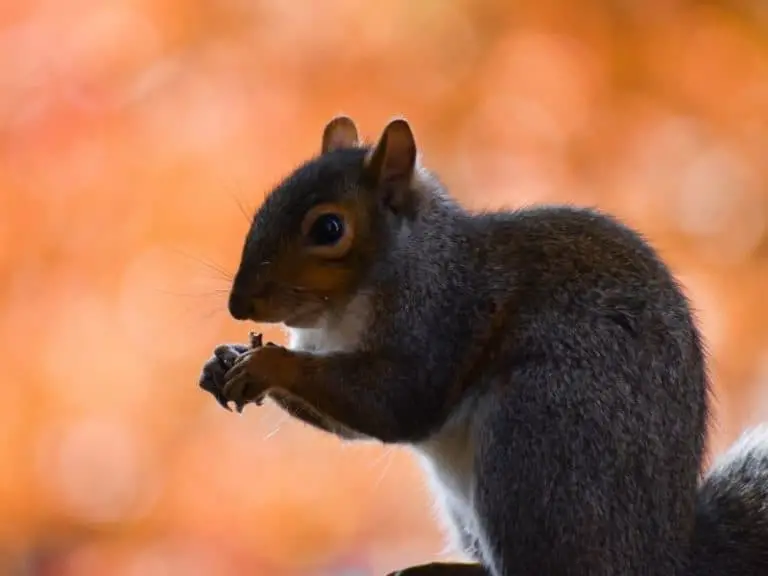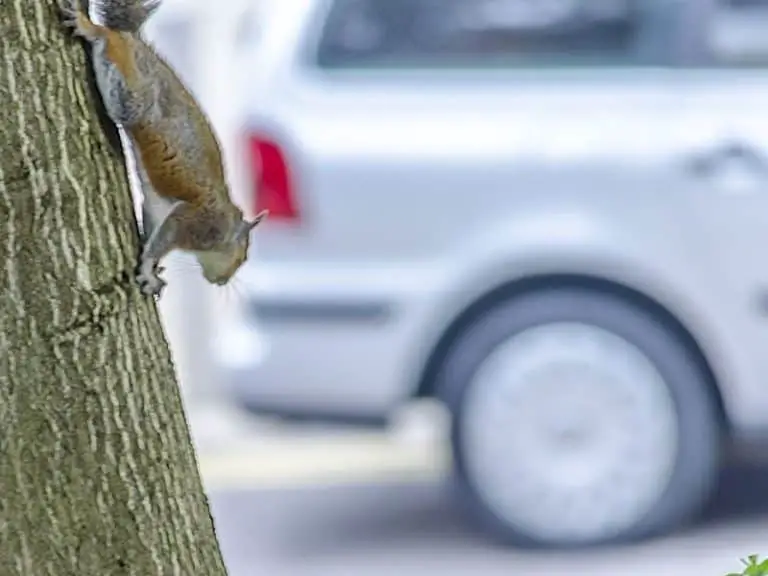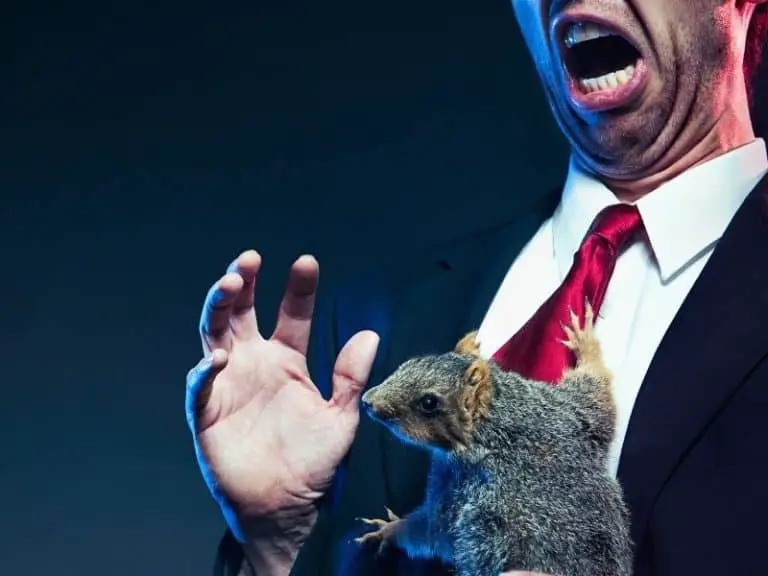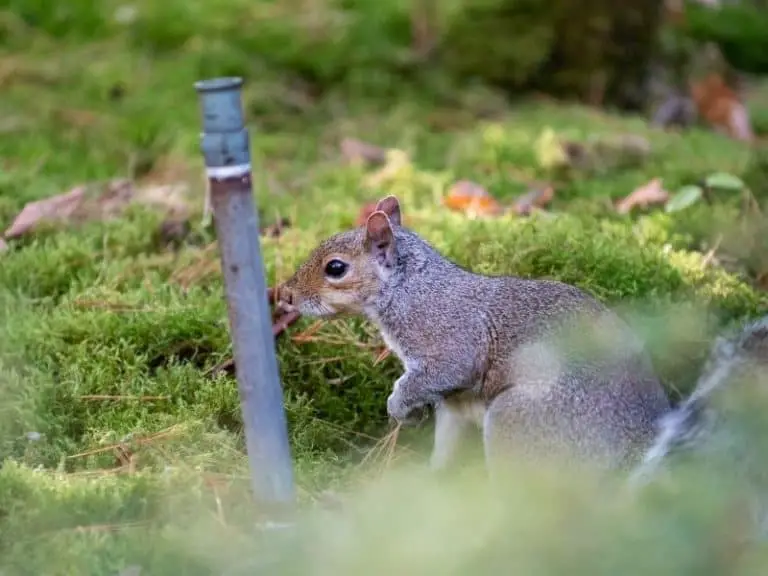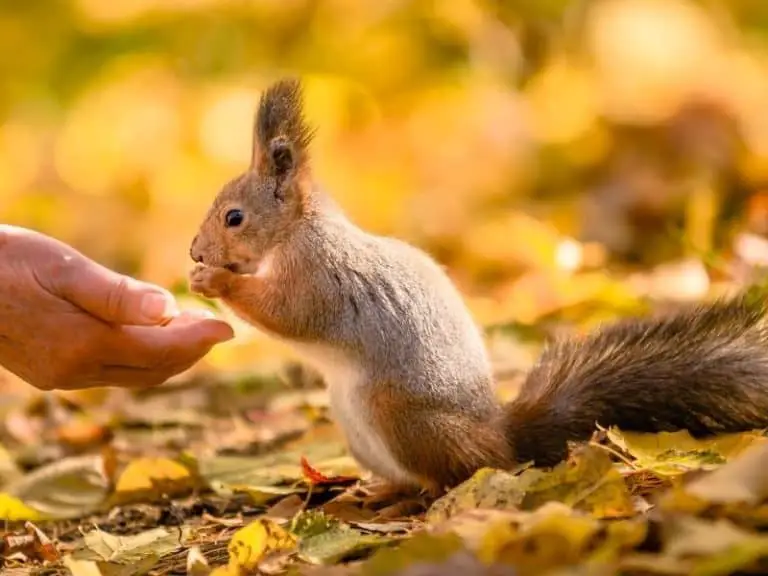Can Squirrels Regrow Their Tails: Some Interesting Facts
Squirrels can lose their tails when they get caught between fence boards or come into close contact with a natural predator, such as owls, eagles, hawks, badgers, and snakes. Your pet dog or cat can be responsible for squirrels losing their fluffy tails, too. And now you may be wondering: can squirrels regrow their tails?
Unlike some animals, squirrels cannot regrow their tails. Once they lose their tails, a process called degloving, they lose them forever. The squirrels will live but may fail to carry out some everyday tasks properly. To make up, squirrels will grow long fur tufts that will serve as makeshift tails.
It can be easy for your heart to be filled with guilt if there’s a tailless squirrel in your backyard because its furry tail got caught in the fence you installed or ended up as your dog or cat’s memento.
Worry not because the poor squirrel will live, although it certainly has experienced pain and unnecessary stress and anxiety in the process.
Continue reading if you want to stop feeling guilty and attain peace of mind. Below you will come across some of the most important things you need to know about squirrels and the tails that they could lose.
Different Uses of a Squirrel’s Tail
One of the reasons why squirrels look adorable and complete standouts is that they have long and fluffy tails. However, their tails are for many other things that just make them cuddly rodents.
Here are some of the top uses of a squirrel’s tail:
- For balancing. It’s true that a squirrel relies heavily on its tiny paws and powerful hind legs for sprinting from point A to point B and jumping from one tree branch to the next. However, there is something that allows a squirrel to carry out these things without going out of balance. It’s none other than its tail.
- For safe landing. Just in case a squirrel loses its balance and falls, no worries. That’s because it can use its tail as some sort of a parachute to slow down its fall. And when it’s about to land, a squirrel will turn its body to make sure that its bushy tail will hit the ground first, thereby cushioning its fall.
- For staying warm. When winter strikes, a squirrel spends most of its waking hours in a tree or burrow to stay away from the cold. To maintain a normal body temperature, it wraps its tail around its body, especially while sleeping. So, in other words, a squirrel’s tail also serves as some kind of coat to stay warm and cozy.
- For swimming. Believe it or not, a squirrel is not just an excellent tree climber. This gnawing critter is also a very good swimmer. In the water, it can use its tail as a rudder to steer itself from one pond or river bank to the other. Especially when there’s turbulence, a squirrel’s tail can help it stay on course without much trouble.
- For communicating. A squirrel may also use its tail for communicating with other squirrels. Its tail can come in handy, most especially during mating season — it fluffs its tail to attract potential partners. A squirrel can also flick its tail quickly for a number of times to warn other squirrels that a predator is around.
- For defense. Last but not least, a squirrel may use its tail to keep it out of harm’s way. When there’s danger, it can use its tail to make itself appear bigger. It can also use its tail as some kind of whip to scare away a snake or any other threat. Of course, it can use its tail as bait, thus allowing it to flee and run to safety.
With so many uses, keeping its tail intact can be extremely beneficial for any squirrel. It’s true that it will continue to live just in case it loses its tail.
However, a squirrel may no longer be able to carry out an assortment of everyday activities, from traversing tree branches to making itself look attractive in the eyes of a potential partner, easily.
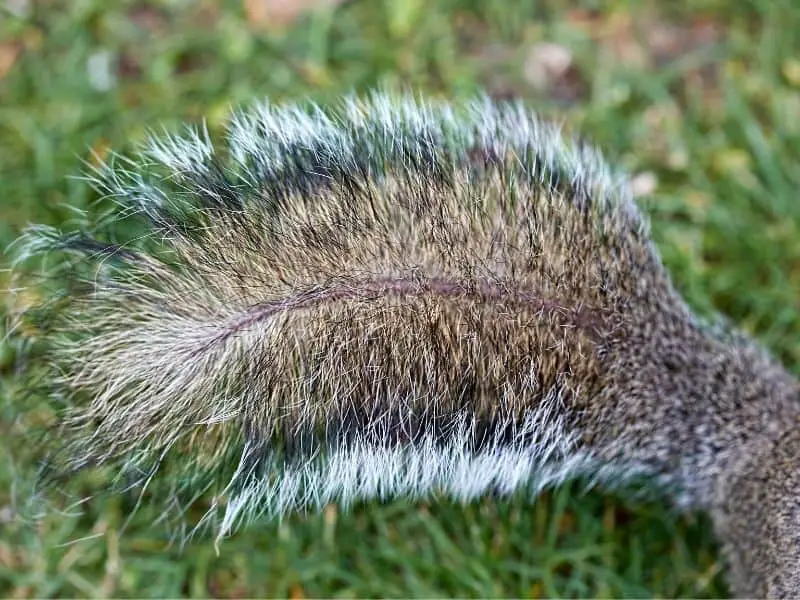
Degloving: A Great Lifesaver
It was mentioned above that one of the uses of a squirrel’s tail is to protect itself from a predator, thus enabling it to enjoy snacking on (and burying) more nuts and seeds for six to ten years.
A squirrel doesn’t have the ability to detach its tail on its own to distract its opponent for it to flee freely.
For its tail to become detached, something has to hold it in place or yank it off as the poor creature scampers off to safety.
It can be the beak of a falcon, fangs of a snake, or paws of a domesticated dog or cat — your pet!
That’s okay because the tail of a squirrel is designed to be easily severed from the spine. It’s referred to as degloving, and the name pretty much suggests that the process is like taking a glove off.
Degloving is not a pretty sight. That’s because the fluffy tail is separated from the squirrel alright, but the part of the spine that makes up the length of a squirrel’s tail remains intact.
Sooner or later, the remaining spine will dry out. To get rid of it, the squirrel will chew it off. That’s a painless process, but degloving is definitely painful.
But that’s okay — it’s much better for a squirrel to experience pain as its tail gets degloved than to die at the hands of a predator. Thanks to degloving, a squirrel can avoid sure death.
Does a squirrel need treatment after degloving?
Since the tail of a squirrel is designed to be easily severed from the main body as needed, healing without the help of a vet is very much possible. There will be an open wound alright, but it will soon heal. The remaining spine will slowly dry out until such time that the squirrel can chew it off.
According to veterinarians themselves, there is always a risk for an infection to happen. However, sepsis, a life-threatening reaction of the body to an infection, is very rare.
What to Do to Make Amends
If you’re pretty sure that the reason why an innocent squirrel lost its tail is a structure on your property or a furry pal of yours, there are certain things that you may do to make up for it:
- Deal with the cause of the problem. If you’re worried that other squirrels around might follow suit and lose their tails, too, spring into action. Is it due to the fence? Opt for a squirrel-friendly fence. This type of fence is safe not only for squirrels but other creatures, too. Is it due to your pet? Keep your pet indoors.
- Feed the squirrels immune-boosting foods. The goal is to speed up the healing process of the squirrel and keep an infection of the wound from striking. To help boost its immune system, feed the squirrel with vitamin C-rich foods. Some examples are strawberries, watermelons, cucumbers, carrots and squash.
- Take it to the vet. Just in case the sight of a squirrel without a tail is keeping you from getting a good night’s sleep, you may try taking the animal to the nearest wildlife rescue or veterinary clinic. But if it seems like the squirrel is doing fine despite losing its tail, then there is nothing for you to do.
- Build a squirrel house. Earlier, it was mentioned that one of the purposes of a squirrel’s tail is to keep itself warm. Before winter happens, it’s a great idea to build a squirrel house. You may also order one that’s ready for installation. Just make sure that you place the squirrel house where its resident will be safe from harm.
There’s good news: to make up for its missing tail, a squirrel will grow a long fur tuft.
It’s not going to be as long and fluffy as its original tail. What’s more, it’s not going to be able to match the functionality of its missing tail. However, that long fur tuft is good enough for communicating with other squirrels or providing its body heat during the coldest months of the year.
Just Before You Go
The tails of squirrels are designed in a way that they can be easily detached in case they have to run away from a threat.
Because of this, they will live and continue to thrive, although they may no longer be able to carry out everyday things with much ease and precision as when they still had their tails.
Related Post: 37 Things That Squirrels Like to Eat the Most
Photo credit: ©canva.com
Medical Disclaimer: TheHomePestControl is a digital publisher and does not offer personal health or medical advice. The contents of this website are not intended to substitute for professional medical advice, diagnosis, or treatment.
Affiliate Disclaimer: As an Amazon Associate, I earn from qualifying purchases made on our website. If you make a purchase through links from this website, I may earn a commission at no additional cost to you.

